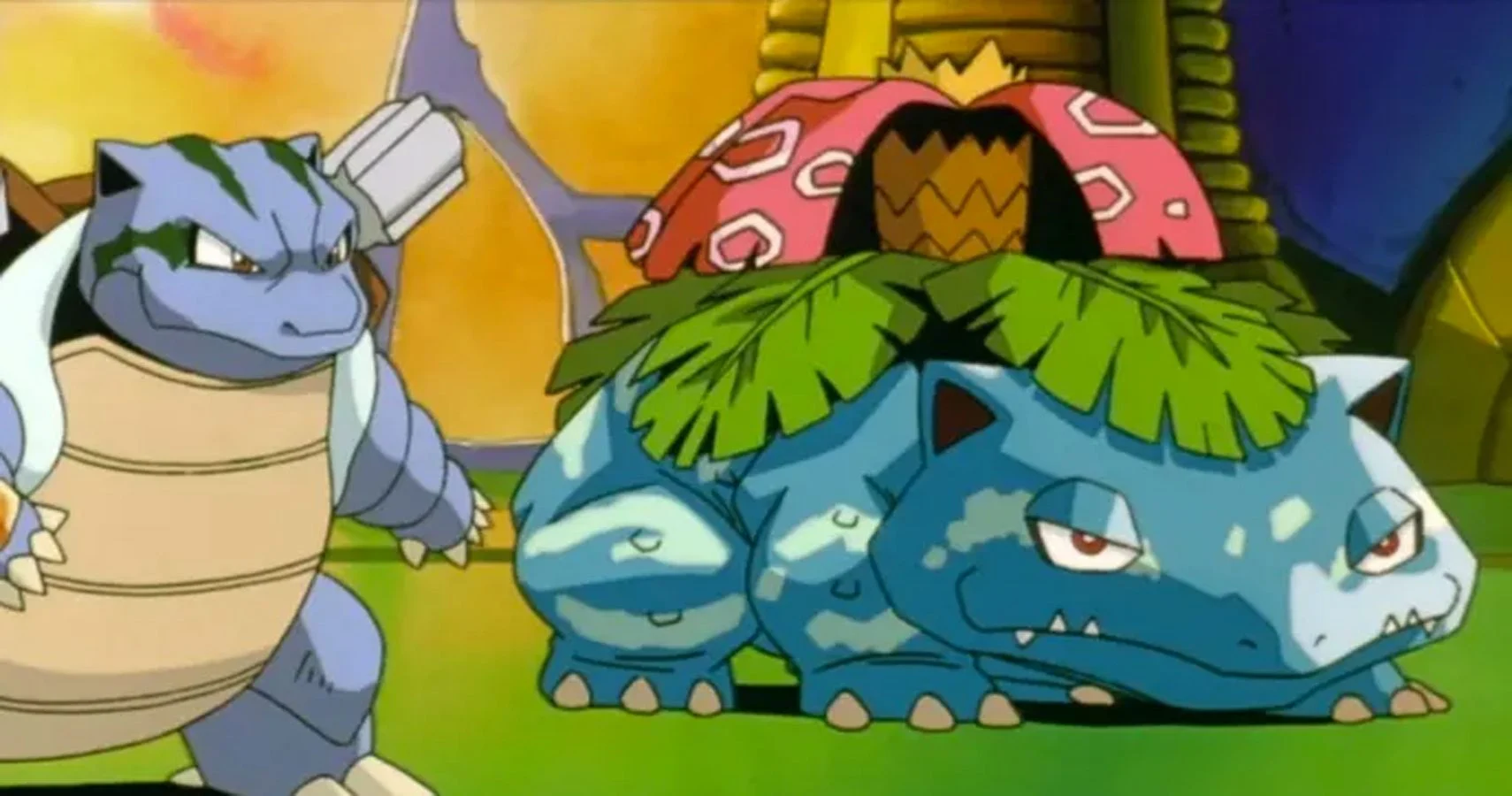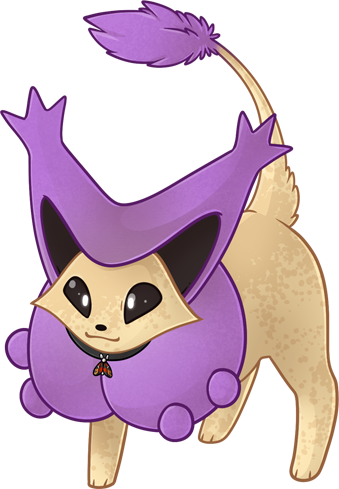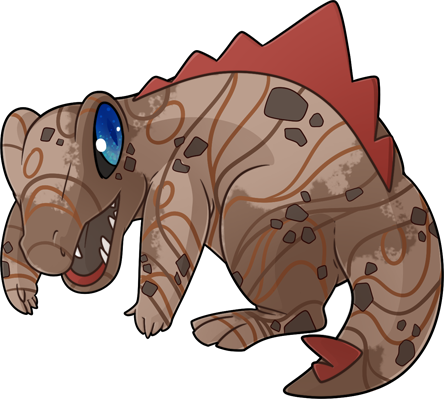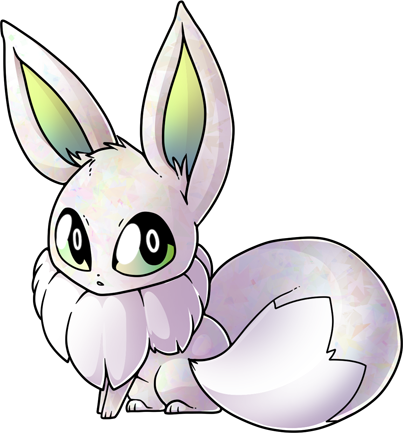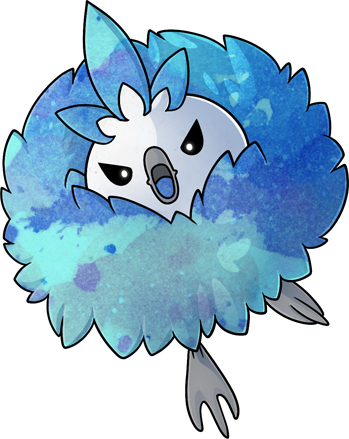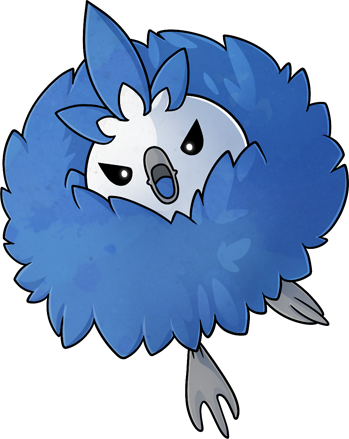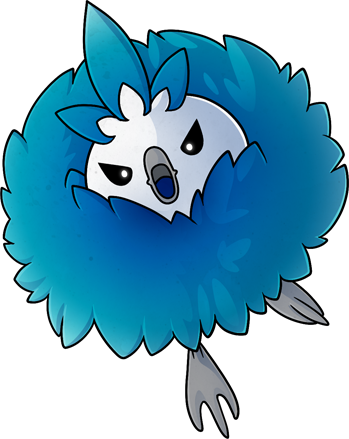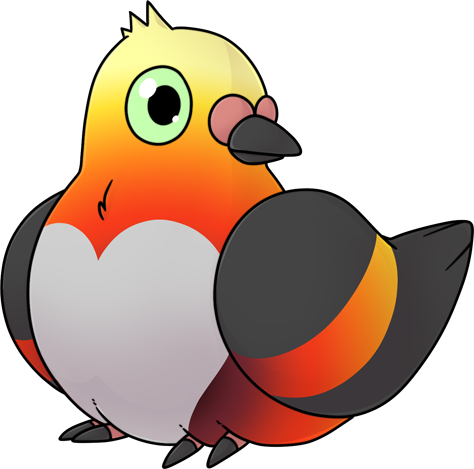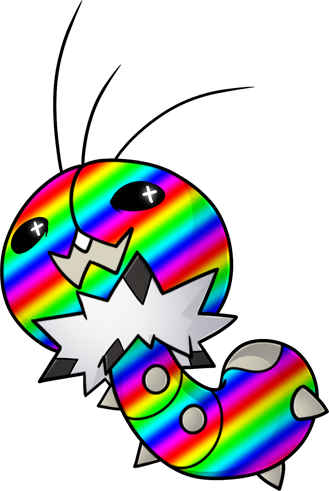Marking Complexity, Textures, and Gradients
Markings
Markings here are defined as clear, definite sections of color that are obviously separate from the base color they appear on. Generally speaking, markings in the shop won't be more complex than canonical appearances of pokémon, both in the games/art and the anime/movies. Two good examples are the cloned pokémon from the first movie and Cosmog from the games.
In the cloned pokemon, they have markings which are solid color and relatively simple. Despite the venusaur having both stripes and a piebald effect, neither are extremely complex in execution. Likewise, cosmog has both gradients and markings, but the number of stars on it are fairly low. Freckles and spots are allowed in a similar manner in the shop!
These pokémon all display different ranges of acceptable markings. On the rattata, it has single color striping and tips, making it clearly legal. The delcatty, on the other hand, has much busier dappling, but the execution is such that it is primarily a simple two-color split, despite the speckled edging. The subtlety of the colors causes it to border on being viewed as a texture as well, giving it more leeway for passing. The shiny eevee has smaller and more numerous markings than the other two examples, but they are still simple shapes and bold regions, no more complex than official pokémon like
basculegion or
obstagoon.
This is an example of illegal complexity. The high number of tiny, complex markings and their layered appearance is something you wouldn't expect to find on a pokémon normally, nor are they similar to any of the limit pushing precedents, so it would not be allowed.
Textures
Textures, unlike markings, are patterns and colors in a section that don't radically alter the perception of that section or create clearly defined marking areas. These are subtle effects in a pokémon's coat or skin, as opposed to fully defined marks that you can point out easily.
For instance, this shiny eevee has a pearlescent pattern on its body, but there's nothing on it that could be pointed out in such a way as to be called a marking; there are no "stripes," "spots," "swirls," etc. It also does not change the intended color of the eevee, as while it clearly has different shades on its body, it would generally be called a "white" pokémon if someone were to label it with a single color.
In contrast, the watercolor texture applied to this torchic makes sharply visible patterning in its fluff. While the paper pattern itself is fine, there are clear splotches and splat areas in several different tones. These would be considered markings, not textures, as the coat is now obviously multicolor - there are blue, cyan, and purple areas in it. The torchic itself would still be legal, as the markings themselves are not extremely complex and are only made of a few colors, but it would be classified as a shiny due to the colors being out of standard range for the species. It would be considered to have both markings and texture combined and is definitely on the higher end of allowed complexity!
Here is the same torchic with the opacity of the underlying pattern turned way down to make a more subtle effect. There is still variety and soft texturing, but no largely defined markings. The fluff is also now definitely "blue," as opposed to the earlier example.
This is a totally illegal torchic. While the colors may fade into each other a la gradients, they make distinct areas of color that would still be described as markings. Those markings are, in turn, of a wide number of colors and numerous shapes layered over each other, so this would not be allowed as a legal pokémon.
Gradients
Soft/simple gradients are allowed in color sections. They must still be legal in color!
This is an example of a standard Nauwillian torchic and a shiny pidove. The gradient on both of them is smooth, flowing entirely from one color to another with no jarring repeats or breaks. The torchic's blues are all within range for its species, and the pidove is shiny so can have whatever colors desired so long as they follow this gentle gradient rule.
This Nauwillian scatterbug, on the other hand, while technically using "gradients," has colors which are sharply divided in such a way they would more accurately be called stripes. There is no subtle flow of one color into the next, and as such this would not be considered a gradient but would be judged as having markings instead. As such, it wouldn't be legal, as it's got a wide array of many colors and stripes!



